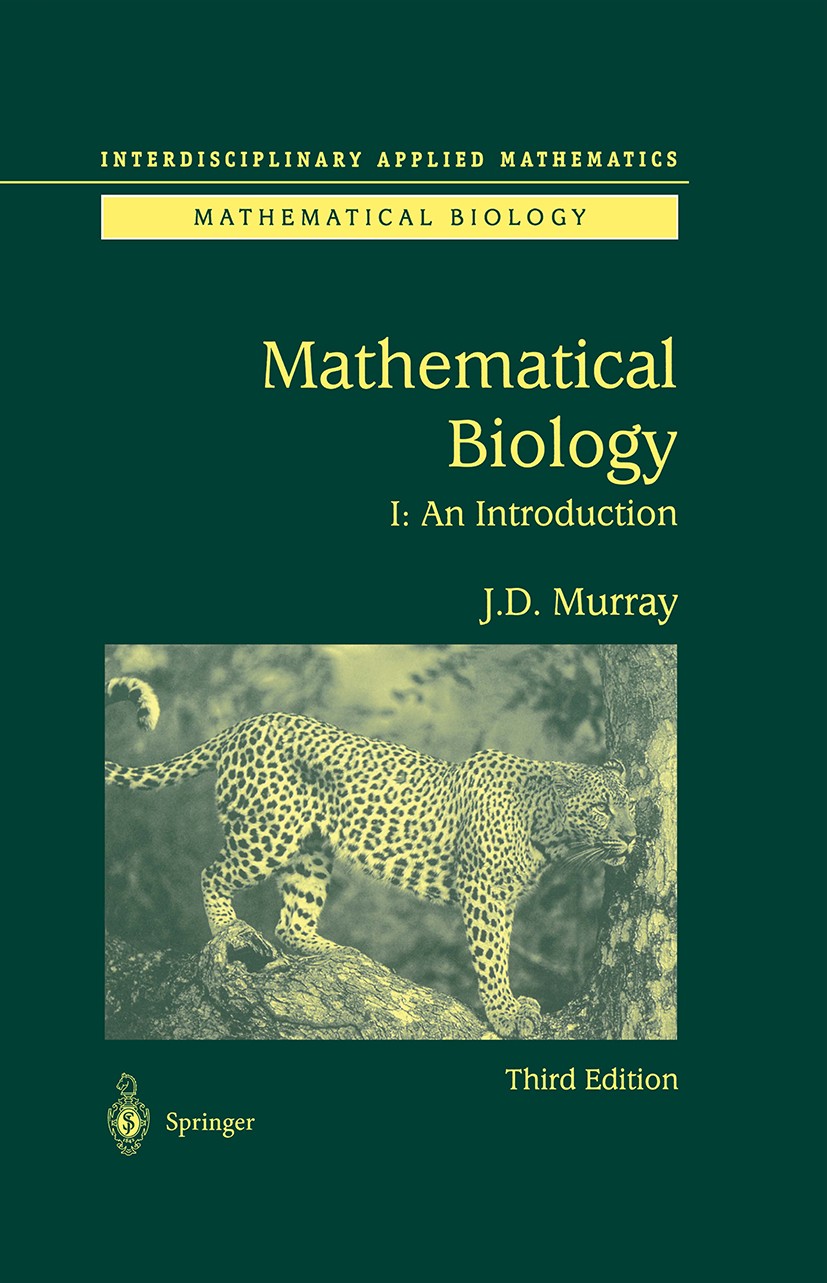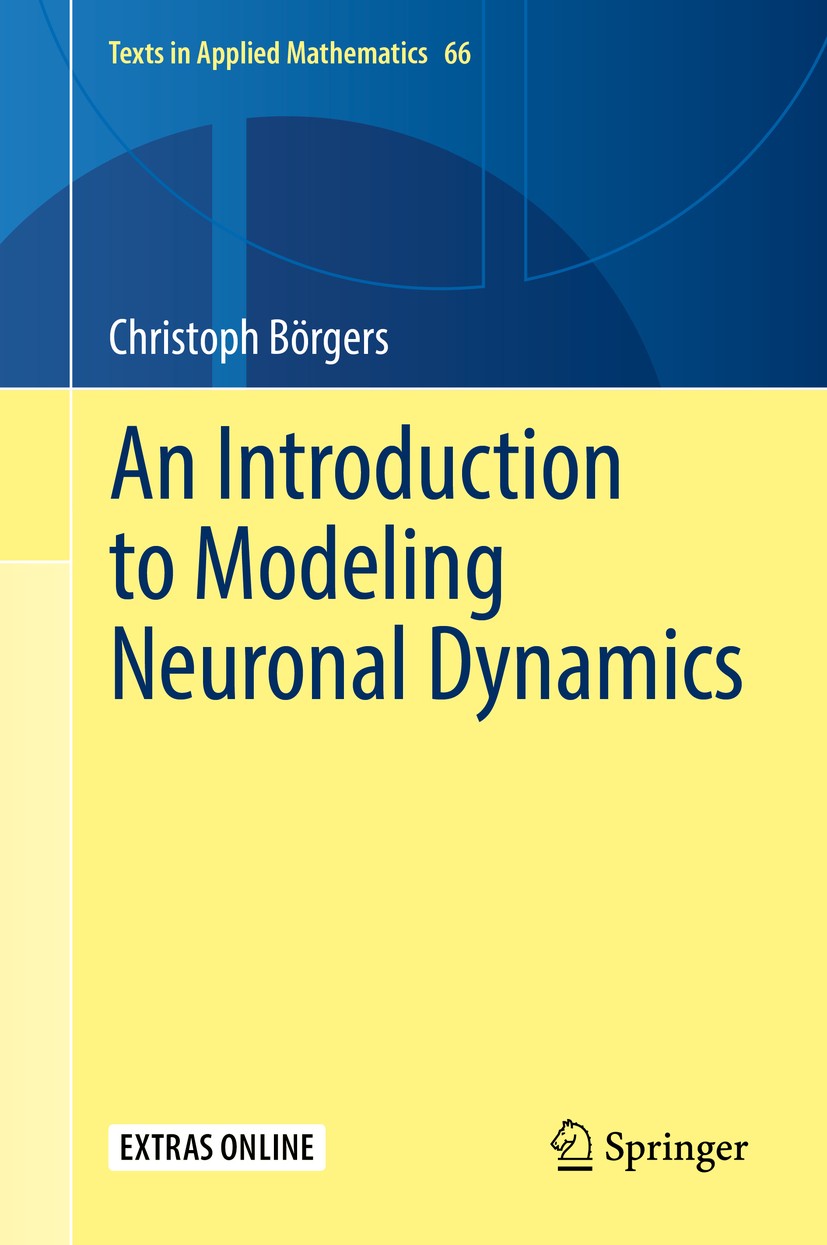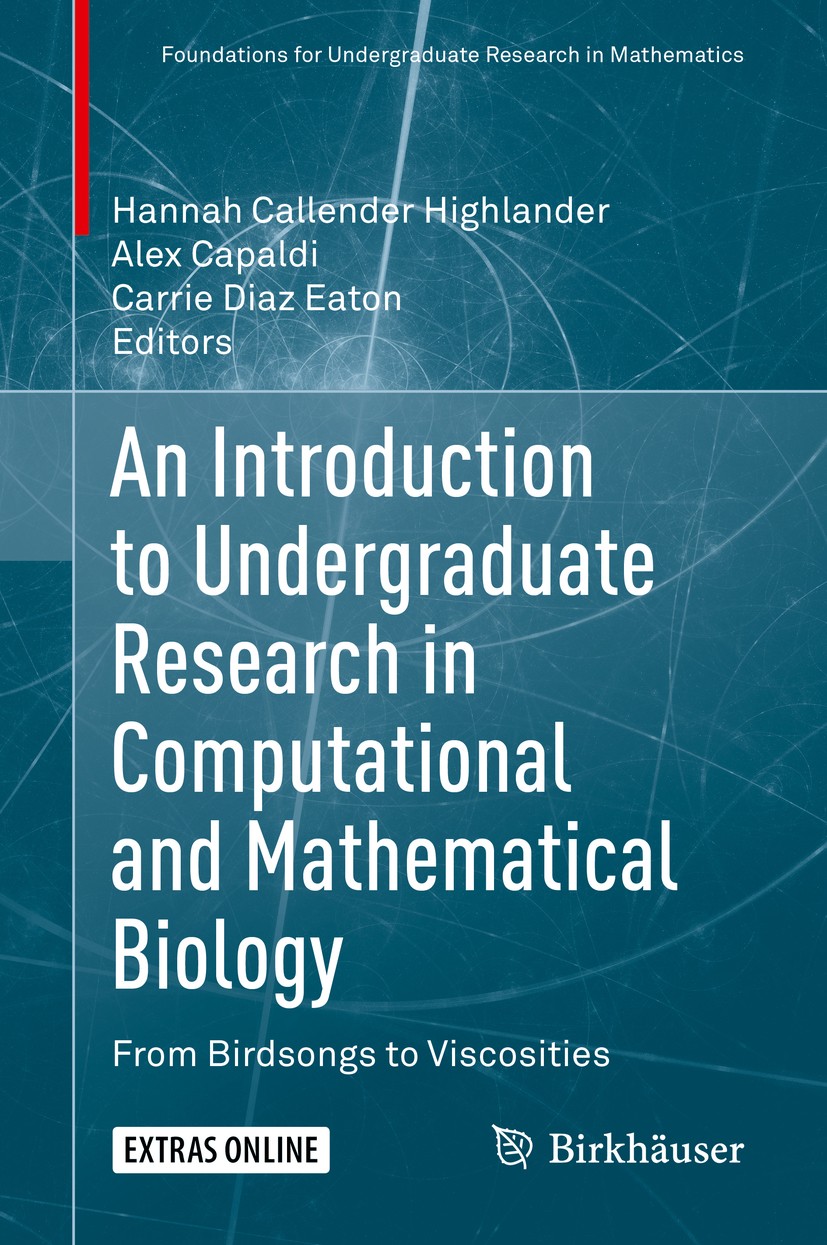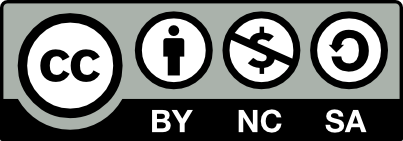| After taking this course, the student should be able to: | Methods of assessment |
|---|---|
| Use mathematical tools from calculus, differential equations, and linear algebra to analyze foundational mathematical models arising in the life sciences. | Homework assignments and in-class written exams. |
| Interpret the meaning of mathematical equations or models representing various biological processes. | Homework assignments, model reports, and final project. |
| Utilize computing tools such as R to analyze and interpret data-driven mathematical models. | Homework assignments, model reports, and final project. |
| Communicate effectively in writing their work in applying the techniques of applied mathematics to problems arising in the life sciences. | Homework, model reports, and final project consisting of a written paper. |
MATH 463 Topics in Biomathematics
Spring 2024
Course Syllabus
Welcome to MATH 463 Topics in Biomathematics for Spring 2024! This page contains the syllabus for the course. We begin with a brief description of Biomathematics, followed by information about the instructor, course materials, and course policies.
What is Biomathematics?
Biomathematics is concerned with the use of mathematical methods (e.g., linear algebra, differential equations, dynamical systems, and probability theory) to understand phenomenon in the life sciences, it is part of the larger field of mathematical and theoretical biology. Mathematical and theoretical biology provide a solid foundation for computational and quantitative approaches to investigations in biology and medicine.
Instructor Information

Instructor: Jason M. Graham
Office Location: LSC 319A
Office Hours for Students: Students are welcome and encouraged to visit my office Mondays 1:30 - 2:30; Wednesdays 10:30 - 11:30 and 1:30 - 2:30. You may also make an appointment via email to meet with me outside of these scheduled office hours, view my general schedule. Appointments are not necessary for regularly scheduled student office hours.
Email: jason.graham@scranton.edu
Phone: (570) 941-7491
Course Page: https://biomath2024.netlify.app/
Course Repository: https://github.com/jmgraham30/biomath_2024
Course Materials
Required Course Materials
All students in MATH 463 from Spring, 2024 will be expected to have access to the following required textbook:
Topics in Applied Mathematics and Modeling: Concise Theory with Case Studies by Oscar Gonzalez, ISBN: 978-1-4704-6991-7
Topics in Applied Mathematics and Modeling (TAMM) covers basic concepts and techniques in mathematical modeling and applied mathematics that we will use throughout the course. We will study all of chapters 1 - 4 and possibly some of chapter 5. Many problems from the book will be assigned for homework.

Additionally, we will often refer to the following journal articles:
Susceptible-Infected-Susceptible type COVID-19 spread with collective effects, Amanda Crocker and Daniel Strömbom, Scientific Reports 13, Article number 22600 (2023).
Why Wolbachia-induced cytoplasmic incompatibility is so common, Michael Turelli, Andrew Katznelson, and Paul S. Ginsberg. Proceedings of the National Academy of Sciences, 119, no. 47 (2022): e2211637119.
General model of inflammation, Megan C. Herald, Bulletin of mathematical biology, 72, (2010) pp. 765-779.
Recommended Texts and Readings
Occasionally in the course we will make reference to topics from the following recommended texts. These books are not required for the course and students are not expected to purchase them.

A Course in Mathematical Biology: Quantitative Modeling with Mathematical and Computational Methods by Gerda de Vries, Thomas Hillen, Mark Lewis, Johannes Müller, and Birgitt Schönfisch. ISBN: 978-0-89871-612-2.
A Course in Mathematical Biology (ACMB) covers common approaches to the mathematical modeling of biological systems. We will study select topics from the book based on the interests of the students and instructor, and as time permits.

Biology in Time and Space: A Partial Differential Equation Modeling Approach by James P. Keener, ISBN: 978-1-4704-5428-9
Biology in Time and Space (BTS) covers common approaches to the mathematical modeling of biological systems using differential equations. We will study select topics from the book based on the interests of the students and instructor, and as time permits.

Solving Differential Equations in R by Karline Soetaert, Jeff Cash, and Francesca Mazzia. ISBN: 978-3-642-28069-6.
This book covers practical aspects of using R in solving numerically the types of differential equations we will study in this course as mathematical models for biological systems.
Electronic access to Solving Differential Equations in R is available through the Weinberg Memorial Library. Access the book. See also the article Solving Differential Equations in R.
Additionally, you may find the Spring 2022 MATH 463 Course Page: https://topicsinbiomath.netlify.app/ useful. It contains links to course notes and other materials from when the course was taught in Spring 2022.
Suggestions for Further Reading
To go deeper into the topics covered in this course, the following books are recommended. These books are not required for the course and students are not expected to purchase them. However, these may be valuable sources for topics for a final project or for further study.
Mathematical Biology by J.D. Murray, ISBN: 978-0-387-95223-9
Mathematical Biology is an influential text covering a wide range of topics in mathematical biology. The most recent third edition of the book consists of two volumes, see the Wikipedia article on the book for more details.

An Introduction to Modeling Neuronal Dynamics by Christoph Börgers, ISBN: 978-3-319-84585-2
An Introduction to Modeling Neuronal Dynamics covers the basics of mathematical and computational neuroscience. In particular, the book covers the Hodgkin-Huxley model of the action potential, the FitzHugh-Nagumo model, and the Wilson-Cowan model of interacting populations of neurons. The book also covers some mathematical techniques for analyzing nonlinear dynamical systems models for neuroscience.

An Introduction to Undergraduate Research in Computational and Mathematical Biology From Birdsongs to Viscosities edited by Hannah Callender Highlander, Alex Capaldi, and Carrie Diaz Eaton, ISBN: 978-3-030-33647-9
An Introduction to Undergraduate Research in Computational and Mathematical Biology From Birdsongs to Viscosities contains chapters covering a variety of topics in current research in computational and mathematical biology meant to engage undergraduate students.

Dynamics of cancer by Natalia Komarova and Dominik Woodarz, ISBN: 978-981-4566-36-0
Dynamics of cancer aims to provide an introduction to mathematical models that describe the dynamics of tumor growth and the evolution of tumor cells. The book has a strong evolutionary component and reflects the viewpoint that cancer can be understood rationally through a combination of mathematical and biological tools.

Use of Digital Technology
Work and research in Biomathematics requires students and professionals in the field to make use of computing and digital technology. The primary uses of digital technology in Biomathematics is for producing and importing data, scientific computing, visualization of data and model-based simulations, and preparing written documents to present scientific results. Students in this course will be expected to make some use of computing and technical writing. Two commonly used technological tools are R for scientific computing and
The course website contains reference pages for scientific computing for Biomathematics using R, Julia, and Python.
Course Information
Course Description
A study of discrete and continuous mathematical models in biology. Topics include: population dynamics of single species and interacting species, infectious diseases, population genetics, and cell populations with tumor modeling.
Prerequisites
The prerequisites for this course is MATH 341 Differential Equations and MATH 351 Linear Algebra. Specifically, the students are expected to have a solid foundation in calculus, and a working knowledge of elementary linear algebra and basic ordinary differential equations (ODEs). Some topics from probability and statistics will be used, but these will be reviewed as needed. Additionally, some topics from linear algebra and differential equations may be reviewed or presented from a different perspective than MATH 341 or MATH 351. No background in programming is assumed.
Student Learning Objectives and Assessment
Link with Mathematics Program Learning Outcomes
The student learning objectives of this course are linked with the Mathematics Program Learning Outcome
“Demonstrate competence in analytical and critical reasoning.”
“Demonstrate college-level knowledge in applied mathematics.”
Link with General Education Goals and Objectives
MATH 463 has been designated an EPW Level II course. In order to fulfill the learning objectives for EPW Level II students will be asked to complete two writing intensive assignments. These are
- a model report assignment,
- and a final project.
Details for these assignments are described below and additional guidelines are posted on the course learning management system.
Course Policies and Procedures
Attendance
Class attendance and active participation in class discussion is strongly encouraged. If absence is necessary, please inform the instructor and develop a plan to make up for missing content as soon as possible.
Grading
Grade Policy
The course grade will be based on two in-class exams (totaling 50% and evenly distributed), approximately ten weekly homework assignments (15%), one model report (10%), and a final project (25%).
Grade Scale
Letter grades will be assigned based on the following scale:
Use of AI
Artificial intelligence (AI) can be an effective tool in science. For example, AI-based programming assistants like GitHub Copilot or generative model platforms like ChatGPT now help programmers to write better code in less time. Learning to use AI effectively and responsibly is quickly becoming a basic skill for the modern scientist. Because of this, I do not want to completely discourage the use of AI assistance.
However, I ask that you avoid using AI platforms or tools in a manner that is inappropriate in the context of this course. This course teaches a variety of concepts, skills, and critical thinking. Using AI in such a way as to avoid learning, developing skills, or critical thinking is not appropriate. If you find yourself using AI to look up answers, search for complete solutions to problems, or things like this, then your use of AI is not acceptable. It might be helpful to think of AI as an analog to a calculator. If the goal of an assignment is for you to demonstrate that you can do a certain calculation, then using a calculator is not appropriate. On the other hand, if the goal of an assignment is for you to demonstrate that you can solve a problem for which a minor step involves doing a calculation, then using a calculator is okay. AI use in the context of this course should be treated analogously.
In particular, it is expected that students will be able to explain independently and in detail any work or ideas on assignments this semester. Also, it is expected that students can explain independently and in detail the solution to any problem submitted as part of an assignment this semester.
If you have any doubts about your use of AI, then either ask the instructor if your use of AI is acceptable or just don’t use AI.
Assignments
Homework
There will be weekly homework assignments. Assignments will be posted on the course learning management system and made up of problems relating to or extending the material covered in class discussions. Working problems is essential to learning the material and doing well on exams.
Do not underestimate the value (and joy) of carefully working through homework problems.
Exams
The in-class exams are meant to assess 1) students’ understanding of the material covered in class and in homework assignments, 2) students’ understanding of the core concepts, 3) students’ problem solving abilities, and 4) students’ ability to think independently. Exam 1 is scheduled for March 6, and Exam 2 is scheduled for May 1. In writing the tests, I assume that you have been studying the material at least 6 hours per week outside of class.
Model Report
As part of the required coursework for Topics in Biomathematics, students are asked to submit a model report. The goal of this assignment is for students to read, understand, assess, and explain modeling results from a recently published paper in theoretical or quantitative biology or biomathematics. The model report will make up 10% of the course grade. Students must submit at least two drafts of a model report. A model report should be four to five typed pages and prepared using
Final Project
It should be recognized that the mathematical techniques developed in class are applicable in broader situations than can be covered in lectures and homework. Thus, students are asked to individually explore a topic in biomathematics beyond what is covered in lecture by means of a final project. Final projects should be an 8-12 page manuscript prepared using
A set of guidelines for the final project is posted on the course learning management system. You must choose a topic for your final project and submit a one to two paragraph description of your proposed project along with at least two scholarly references to me no later than 5:00pm on March 1.
Course Timeline
Weekly Schedule
Week 1 (01/22-01/26): Introduction to Biomathematics
Week 2 (01/29-02/02): Dimensional Analysis and Scaling
Week 3 (02/05-02/09): One-Dimensional Dynamics and Introduction to Population Dynamics
Week 4 (02/12-02/16): Bifurcation Theory and Compartment Models
Week 5 (02/19-02/23): SIR Type Models and The Chemostat Bio-reactor
Week 6 (02/26-03/01): Functional Forms
Week 7 (03/04-03/08): Exam 1
Week 8 (03/11-03/15): Spring Break
Week 9 (03/18-03/22): Two-Dimensional Dynamics and Phase Plane Analysis
Week 10 (03/25-03/29): Mass Action and Reaction Kinetics/ Easter Break; Model Report Draft 1 Due
Week 11 (04/01-04/05): Easter Break/ Mass Action and Reaction Kinetics
Week 12 (04/08-04/12): Mathematical Physiology
Week 13 (04/15-04/19): Perturbation Methods
Week 14 (04/22-04/26): Additional Topics
Week 15 (04/29-05/03): Exam 2; Model Report Final Draft Due
Week 16 (05/06-05/10): Dead Week
Week 17 (05/13-05/17): Final Exams; Final Project Due
Important Dates
| Event | Date |
|---|---|
| Classes begin | Wednesday, January 24 |
| Last day to add classes | Tuesday, January 30 |
| Last day for 100% tution refund | Friday, February 2 |
| Last day to drop with no grade | Friday, February 23 |
| Exam 1 | Wednesday, March 6 |
| Last day of class before spring break | Friday, March 8 |
| Classes resume after spring break | Monday, March 18 |
| Semester Midpoint | Wednesday, March 20 |
| Last day of class before Easter break | Wednesday, March 27 |
| Classes resume after Easter | Tuesday, April 2 |
| Last day to withdraw with W grade | Friday, April 12 |
| Exam 2 | Wednesday, May 1 |
| Last day of class | Friday, May 10 |
| Final exams begin | Monday, May 13 |
| Final exams end | Friday, May 17 |
University Resources for Students and Academic Honesty
Students with Disabilities
Reasonable academic accommodations may be provided to students who submit relevant and current documentation of their disability. Students are encouraged to contact the Center for Teaching and Learning Excellence (CTLE) at disabilityservices@scranton.edu or (570) 941-4038 if they have or think they may have a disability and wish to determine eligibility for any accommodations. For more information, please visit http://www.scranton.edu/disabilities.
Writing Center Services
The Writing Center focuses on helping students become better writers. Consultants will work one-on-one with students to discuss students’ work and provide feedback at any stage of the writing process. Scheduling appointments early in the writing progress is encouraged.
To meet with a writing consultant, call (570) 941-6147 to schedule an appointment, or send an email with your available meeting times, the course for which you need assistance, and your phone number to: writing-center@scranton.edu. The Writing Center does offer online appointments for our distance learning students.
Academic Honesty and Integrity
Each student is expected to do their own work. It is also expected that each student respect and abide by the Academic Code of Honesty as set forth in the University of Scranton student handbook. Conduct that violates the Academic Code of Honesty includes plagiarism, duplicate submission of the same work, collusion, providing false information, unauthorized use of computers, theft and destruction of property, and unauthorized possession of tests and other materials. Steps taken in response to suspected violations may include a discussion with the instructor, an informal meeting with the dean of the college, and a hearing before the Academic Dishonesty Hearing Board. Students who are found to have violated the Code will ordinarily be assigned the grade F by the instructor and may face other sanctions. The complete Academic Code of Honesty is located on the University website at https://www.scranton.edu/academics/wml/acad-integ/acad-code-honesty.shtml.
My Reporting Obligation as a Responsible Employee
As a faculty member, I am deeply invested in the well-being of each student I teach. I am here to assist you with your work in this course. Additionally, if you come to me with other non-course-related concerns, I will do my best to help. It is important for you to know that all faculty members are required to report incidents of sexual harassment or sexual misconduct involving students. This means that I cannot keep information about sexual harassment, sexual assault, sexual exploitation, intimate partner violence or stalking confidential if you share that information with me. I will keep the information as private as I can but am required to bring it to the attention of the University’s Title IX Coordinator, Elizabeth M. Garcia, or Deputy Title IX Coordinator, Diana M. Collins, who, in conversation with you, will explain available support, resources, and options. I will not report anything to anybody without first letting you know and discussing choices as to how to proceed. The University’s Counseling Center (570-941-7620) is available to you as a confidential resource; counselors (in the counseling center) do not have an obligation to report to the Title IX Coordinator.
Non-discrimination Statement
The University is committed to providing an educational, residential, and working environment that is free from harassment and discrimination. Members of the University community, applicants for employment or admissions, guests, and visitors have the right to be free from harassment or discrimination based on race, color, religion, ancestry, gender, sex, pregnancy, sexual orientation, gender identity or expression, age, disability, genetic information, national origin, veteran status, or any other status protected by applicable law.
Students who believe they have been subject to harassment or discrimination based on any of the above class of characteristics, or experience sexual harassment, sexual misconduct or gender discrimination should contact Elizabeth M. Garcia, Title IX Coordinator, (570) 941-6645 elizabeth.garcia2@scranton.edu, Deputy Title IX Coordinators Diana M. Collins (570) 941-6645 diana.collins@scranton.edu, or Ms. Lauren Rivera, AVP for Student Life and Dean of Students, at (570)941-7680 lauren.rivera@scranton.edu. The United States Department of Education’s Office for Civil Rights (OCR) enforces Title IX. Information regarding OCR may be found at <www.ed.gov/about/offices/list/ocr/index.html>
The University of Scranton Sexual Harassment and Sexual Misconduct Policy can be found online at https://www.scranton.edu/diversity. All reporting options and resources are available at https://www.scranton.edu/CARE.
About Pronouns
It is easy to make assumptions about an individual’s pronouns, but we try not to! Please tell us in class or via a private email if you would like to let us know what your pronouns are, if/when you would like us (and others) to use them, and certainly feel free to correct us or others if we make a mistake. Using the pronouns that a person has indicated they prefer is considered both professional and polite, and as such we ask that all members of our class use the appropriate pronouns.
If you have questions about this, please feel free to look up more information here (https://www.mypronouns.org/) or email jason.graham@scranton.edu with any questions.
Student Mental Health: Suggestions and Resources
Many students experience mental health challenges at some point in college. Struggles vary and might be related to academics, anxiety, depression, relationships, grief/loss, substance abuse, and other challenges. There are resources to help you and getting help is the smart and courageous thing to do.
Counseling Center (6th Floor O’Hara Hall; 570-941-7620) – Free, confidential individual and group counseling is available on campus.
Teletherapy – For students who wish to access therapy via video, phone, and/or chat, the University offers a teletherapy resource. Please contact the Counseling Center (570-941-7620) to inquire about teletherapy.
Mental Health Screenings – Confidential, online “check up from your neck up” to help you determine if you should connect with a mental health professional.
Dean of Students Office (201 DeNaples Center; 570-941-7680) – Private support and guidance for students navigating personal challenges that may impact success at the University
Final Note
The instructor reserves the right to modify this syllabus; students will immediately be notified of any such changes and an updated syllabus will be made available to the class via the course learning management system.
